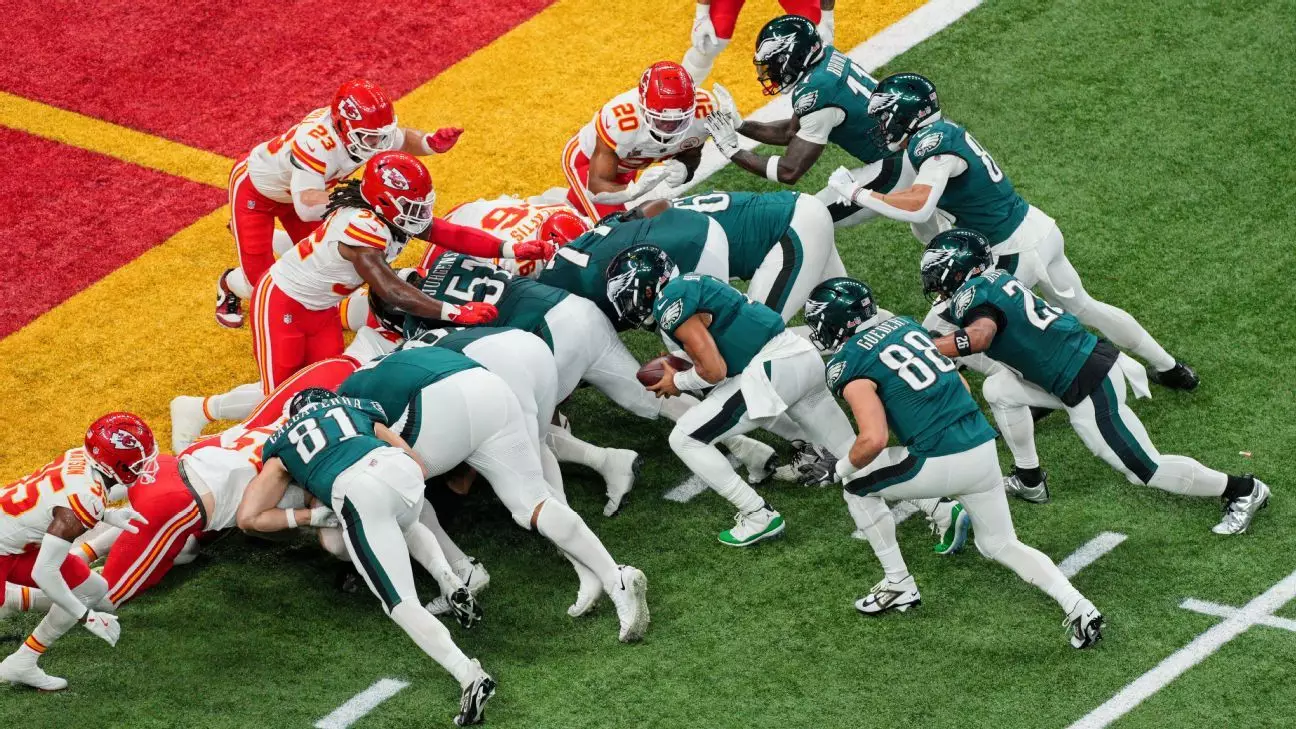The NFL is no stranger to controversy surrounding its rules and gameplay strategies. Recently, one particular play known as the “tush push” has become a focal point of discussion, as it challenges traditional football tactics and raises questions regarding its continuity within the sport. The proposal to ban this specific quarterback sneak, submitted by an unnamed NFL team, has ignited conversations around these concerns, bringing to light the balance between innovation in gameplay and the preservation of the spirit of the game itself.
A Deeper Look into the “Tush Push” Maneuver
The “tush push” refers to a tactic wherein one or more players position themselves behind the quarterback to propel him forward through defensive lines during a sneak attempt. This move has gained considerable traction and success among teams, particularly the Philadelphia Eagles and Buffalo Bills, who have engaged in a staggering 163 attempts of this strategy over the past three seasons—far surpassing any other teams in the league. The statistical efficacy of this maneuver is undeniable, with the Eagles achieving impressive success rates of approximately 87% for touchdowns and first downs, compared to just 71% for others.
Critics argue that the play can skew competitive balance, rendering it more challenging for defenses and lessening the game’s unpredictability. The implications of allowing such a tactic to flourish could lead to a scenario where teams heavily rely on its effectiveness, leading to an erosion of diversified play-calling—an essential ingredient of any compelling sporting event.
During the recent NFL scouting combine, Troy Vincent, the executive vice president of football operations, revealed that the proposal to eliminate the “tush push” is on the agenda for the upcoming spring owners’ meeting in Palm Beach, Florida. An essential detail concerning the proposal is that for it to pass, a minimum of 24 out of 32 owners must support the motion. This high threshold emphasizes how difficult it can be to instigate rule changes in an organization where tradition and established practices often prevail.
The implications of such a vote extend beyond the immediate realm of the play itself; they encompass broader themes that affect the NFL’s identity, including the conversation around player safety and sportsmanship. By evaluating the nature of the “tush push,” owners and officials are engaging in a discourse about how far teams can innovate before the sport’s foundational principles are compromised.
A notable case study is the Philadelphia Eagles, led by quarterback Jalen Hurts, who famously executed the “Brotherly Shove” tactic during Super Bowl LIX, securing a touchdown through this initially audacious strategy. Eagles head coach Nick Sirianni has been a vocal supporter of the play, arguing that its effectiveness should not result in its prohibition. His assertion reflects a larger dilemma in sports—when does exceptional performance warrant its own regulation?
Moreover, the Eagles’ tactics have provoked responses from opposing teams, including defensive blunders as seen in the NFC Championship Game, where Washington Commanders’ Frankie Luvu faced penalties attempting to counter the move. This brings to light how successful implementation of such tactics can challenge the limits of defensive strategies and lead to conflicting rule interpretations.
The Future of the “Tush Push”: An Ongoing Debate
As the NFL navigates this rule proposal, a larger conversation about the balance between innovation and tradition is being reignited. The “tush push” showcases how successful teams can redefine gameplay, yet leaves room for the critical examination of the game’s evolution. Stakeholders must weigh the benefits of maintaining strategic diversity and competitive equilibrium against conserving the traditional elements that define the sport.
Ultimately, what emerges from this ongoing debate will not only influence the teams involved but will also set precedents for future rule adaptations within the NFL. How league leaders address this contentious issue may very well shape the landscape of professional football for years to come, making the discussion around the “tush push” far more significant than just one play in a single season. As fans and analysts alike await the outcome of the vote, it is clear that the tension between innovation and tradition remains an ever-present challenge within the NFL.

Leave a Reply